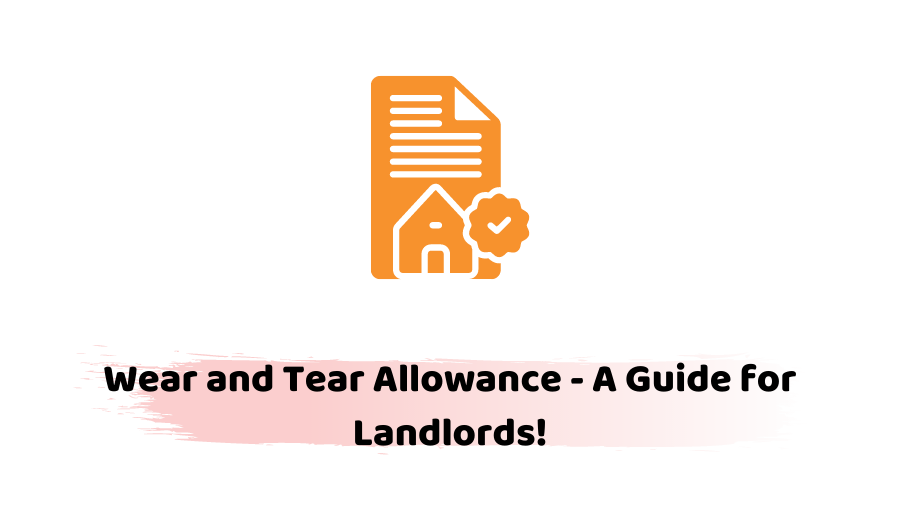A wear and tear allowance was offered to such landlords who were giving furnished accommodations on rent as a residence to tenants. The purpose of this allowance was to compensate expenses that were spent on furnishing the residency. Most of the readers might be wondering by now that how exactly we define wear and tear allowance and what other relevant details are necessary to understand before we intend to make a claim.
Before we delve into the discussion further, let’s see what are the points of focus in this article and they are listed below for you.
- What is Wear and Tear Allowance?
- Wear and Tear Rules Change 2016
- Unfurnished Properties
- The Bottom Line
Why not speak to one of our qualified accountants to know further about the wear and tear allowance? Give us a call on 02034411258 or request a callback. We are available from 9:00 am – 05:30 pm Monday to Friday.
Define Wear and Tear Allowance:
To offer furnish residency accommodation, landlords often change the moveable items like furniture after they are not in the useful form anymore. Such replacements expenses can be claimed by the landlords. HMRC has given a list of assets that are allowed to claim. The list includes the following:
- Furniture that is easy to move and not fixed like bed, table, sofa, and chairs etc.
- Appliances that are standalone like fridge, TV, washing machine, dishwasher, cooker, and freezer etc.
- Laminating, wooden flooring and carpets
- Furnishing that is soft like curtains, linen, and cushion.
- Cutlery and crockery
- Shelves, moving chairs and other furniture of this sort.
Moreover, the above-mentioned list might not cover all the possible items but the idea of the kind of items is clear. Fixtures and fitted items are not in the list that can be claimed if the replacement is made by the landlord. Examples of fixtures include boilers, sinks, baths and other such fitted items that do not come under wear and tear allowance. However, the cost that is spent on the supply can be claimed by the landlords.
Can’t find what you are looking for? why not speak to one of our experts and see how we can help to make your allowance possible and to figure out what you are looking for.
Wear and Tear Rules Change 2016:
The rules about water and tear allowance were updated in 2016, the set of rules depends on the residency that is intended to be on rent, whether it is furnished or unfurnished. The allowance was further scrapped by 10% and then it was replaced by the replacement relief. Below are the points to take into serious consideration:
- The landlords who let furnished residency can claim 10% every year regardless of the fact that they did spend any cost on the replacement of the furniture or not.
- A residency that is on rent but it is unfurnished, such landlords can’t make a claim for wear and tear allowance unless the replacement is made for the appliances like built-in fridge, dishwasher, or cooking range etc.
- The cost spent on maintenance and repairing can be claimed by the landlord regardless of the property type.
Moreover, several professionals and landlords were of the view that the set of rules was unfair and wear and tear allowance new changes with replacement relief are bringing the fairer impacts.
To know more about the rules, reach out to our professionals and get your queries answered as swiftly as possible.
Unfurnished Properties:
Not all the letting residency accommodation are furnished, so, the rules change for the unfurnished properties. In unfurnished properties, the landlord can’t make a claim for wear and tear allowance by replacing any of the moveable assets. The allowance or any other tax relief is not their thing to enjoy in this regard.
Moreover, it is important to know that the newly updated law applies to unfurnished, furnished and partly furnished properties as well. In case the landlord starts to offer the furnishing in the property for the very first time, the claim will not be accepted. The update of claim forms was made in the 2016-17 tax year for the purpose of claiming replacement relief.
It has been observed that claiming on the expenses spent on furnishing is a confusing process for the landlords in case they have to find the difference between fair wear and tear and the wear and tear allowance. However, a detailed guide about this information is provided by the HMRC as well.
Let us manage your practice from A to Z. We’ll take care of everything on your behalf.
The Bottom Line:
Now that you have developed a better understanding of wear and tear allowance, we can sum up the discussion by saying that this allowance was advantageous for the landlords who were offering furnished residency accommodations to the tenants. However, there were certain conditions to be followed in order to enjoy the relief to its fullest. We hope this article helped to develop a better understanding.
Still, have a question? Get in touch with us!
Disclaimer: This article intends to provide general information based on wear and tear allowance.






















































